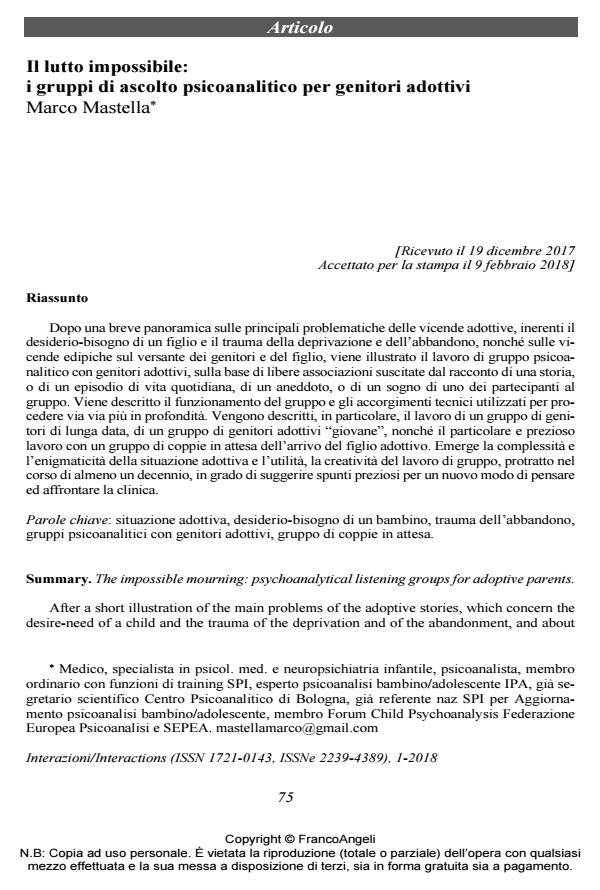The impossible mourning: psychoanalytical listening groups for adoptive parents.
Journal title INTERAZIONI
Author/s Marco Mastella
Publishing Year 2018 Issue 2018/1
Language Italian Pages 23 P. 75-97 File size 205 KB
DOI 10.3280/INT2018-001006
DOI is like a bar code for intellectual property: to have more infomation
click here
Below, you can see the article first page
If you want to buy this article in PDF format, you can do it, following the instructions to buy download credits

FrancoAngeli is member of Publishers International Linking Association, Inc (PILA), a not-for-profit association which run the CrossRef service enabling links to and from online scholarly content.
After a short illustration of the main problems of the adoptive stories, which concern the desire-need of a child and the trauma of the deprivation and of the abandonment, and about the oedipal events on the part of the parents and on the part of the child, the work of a psychoanalytic group of adoptive parents is described. It’s based on the free associations which are aroused from a narration of a history, or of an episode of day life, or of a dream of one of the group members. We describe the group functioning and the technique utilised to go deeper. Three types of group of adoptive parents are described, of different parental experience; one of couples who are waiting to become adoptive parents. The complexity of the adoptive situation and the utility and creativity of the group psychoanalytic work are emerging. It’s possible to obtain precious ideas about new ways of thinking to the clinic.
Keywords: Adoptive situation, desire-need of a child, abandonment trauma, psychoanalytic groups with adoptive parents, group with couples waiting for a baby.
Marco Mastella, Il lutto impossibile: i gruppi di ascolto psicoanalitico per genitori adottivi in "INTERAZIONI" 1/2018, pp 75-97, DOI: 10.3280/INT2018-001006